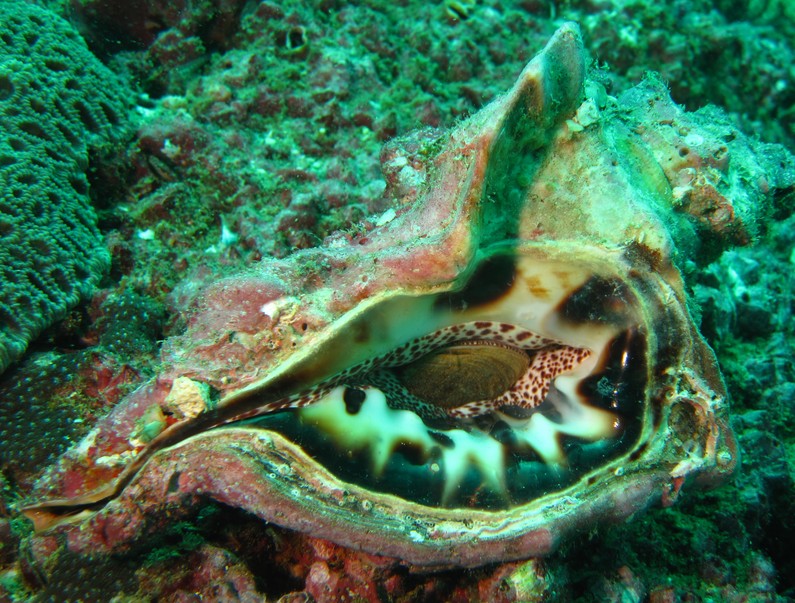CYMATIUM RANZANII - (Bianconi, 1850)
Cymatium ranzanii is a species of predatory sea snail, a marine gastropod mollusk in the family Ranellidae, the triton snails, triton shells or tritons.
Synonyme
Triton ranzanii (Bianconi, 1850)
Extract of the "American museum novitate - number 2108 - 10/10/1962".
http://digitallibrary.amnh.org/dspace/bitstream/handle/2246/3407/N2108.pdf?sequence=1
Triton ranzanii was described from "le canal de Mosambique" by Bianconi(1850, 1851a, 1851b, 1851c). Bianconi compared his species with Triton femorale (Linne) from the West Indies. Only passing mention has been made to Triton ranzanii by subsequent students of the group. Kiister and Kobelt (1878) reviewed the Purpuracea and placed this taxon in a list of species inquirendae. In a monograph of the family Tritonidae by Tryon (1881, pl. 10, fig. 71), one of Bianconi's figures (Bianconi, 1851a; 1851b, fig. 1) was reproduced, and this taxon was included in the synonymy of Triton (Cymatium) tigrinus Broderip, from the tropical eastern Pacific. Bayer (1933) listed Cymatium (Cymatium) ranzanii as a variety of Cymatium (Cymatium) tigrinum (Broderip) in his catalogue of the Cymatiidae in the 'sRijks Museum in Leiden. Smith (1944, p. 22, fig. 270) presented Tryon's reproduction of Bianconi's illustration and followed Tryon by referring the figure to Cymatium tigrinum (Broderip). Smith (1948) did not cite Cymatium ranzanii in his review of the family Cymatiidae, nor did Franca (1960) record this species in her list of mollusks collected at Inhaca Island, Mozambique. Specimens of this species apparently were not available to these workers, and the validity of this species has remained questionable until the present time. Our search of the conchological collections of the larger museums of the eastern United States for specimens of Cymatium ranzanii revealed the following: One specimen, lacking definite locality data, is present in the old D. J. Steward collection of the American Museum of Natural History; and single specimens were recently received by the Museum of Comparative Zoology of Harvard College from Somaliland [Somalia Republic], and by the United States National Museum from near Karachi, Pakistan. Recently, the American Museum of Natural History received two fragmental specimens from Muscat, Oman, Arabia. These five specimens appear to be the only representatives of this species now present in collections of these institutions, and all but one of the specimens were received within the last five years. After determining the rarity of this species, we requested additional information from Grosch. He kindly sent two other specimens to us on loan and provided the following field notes: "The first of the few specimens, three live collected and one or two dead, I found during the months of March or April 1953. It measured 204 mm. Another smaller specimen turned up in 1957 and a third one in 1958. All including one or two dead specimens were found in the same area. This locality is in the North East corner of the Cabaceira Peninsula which separates Mozambique Bay from Conducia Bay, about 200 meters off shore and in about 6 to 10 meters below low tide level. The area has a terraced, gravely bottom covered with seaweed and dotted with great, isolated coral boulders. All specimens were collected about the time of the March Spring tides between the years 1953-1959." Compared to the known living species of Cymatium, there is little doubt that Cymatium ranzanii is most closely related to Cymatium tigrinum (Broderip) of the Panamic faunal province and Cymatiumfemorale (Linne) of the Caribbean fauna (see figs. 3, 4). The three species form a group with obvious affinities of shell characters and are referable to Cymatium, sensu stricto.
